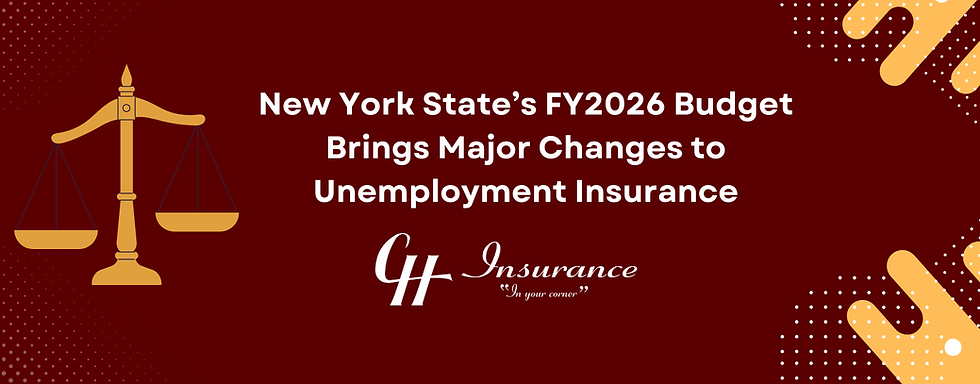The Causes and Consequences of Underinsurance
- dgraham43
- Aug 20, 2025
- 2 min read

Robust insurance coverage is a cornerstone of effective risk management for small businesses. A single uninsured event—such as a fire, flood, cyberattack or critical equipment failure—can cause severe financial disruption, halt operations and, in some cases, threaten long-term viability. Yet, despite these risks, underinsurance remains a frequently overlooked vulnerability. Whether due to outdated valuations or cost-cutting decisions, carrying insufficient coverage can leave small businesses dangerously exposed when a claim arises.
Common Causes of Underinsurance
Several factors contribute to underinsurance in small businesses, including the following:
· Outdated property valuations—Small business owners may overlook the need to regularly update the value of their buildings, equipment or inventory, resulting in coverage that no longer reflects current replacement costs.
· Business growth without policy updates—Small business owners may add staff, locations or assets without adjusting their insurance coverage, leaving new exposures unprotected and increasing the risk of uncovered losses.
· Misunderstanding policy terms—Small business owners may misinterpret complex policy language, leading to incorrect assumptions about what is covered, when coverage applies and how limits or sublimits work.
· Focusing solely on premiums—Small business owners may focus on minimizing insurance costs without considering the implications of reduced coverage limits, broader exclusions or how higher deductibles compromise coverage.
· Neglecting emerging risks—Small business owners may fail to account for new threats such as cyberattacks, climate-related events or supply chain disruptions that may not be covered under standard policies.
The Consequences of Being Underinsured
The financial and operational consequences of underinsurance can be significant. Small businesses may face:
· Partial or denied claims—Insurance may not fully cover the cost of losses if coverage limits are too low or exclusions apply, leaving the business responsible for the uncovered portion.
· Prolonged downtime—Without adequate business interruption coverage, a business may struggle to meet ongoing expenses during recovery, increasing the risk of extended closures or permanent shutdown.
· Legal and regulatory exposure—Insufficient liability coverage can leave businesses vulnerable to lawsuits, fines or penalties, particularly in highly regulated industries.
· Reputational damage—Delays in service or failure to meet obligations due to uninsured losses can erode customer trust and harm long-term relationships.
Strategies to Avoid Underinsurance
To minimize the risk of underinsurance, small business owners should routinely reassess their insurance coverage, particularly after operational changes such as expansion, new hires or equipment upgrades. Obtaining professional appraisals of property and assets is also essential, especially during periods of inflation or supply chain volatility. Additionally, businesses should evaluate whether their existing policies account for emerging risks like cyberthreats, climate-related events or evolving liability exposures.
Work With a Knowledgeable Insurance Agent or Broker
Small business owners should carefully examine policy terms and understand any exclusions to reduce the risk of insurance shortfalls. Working with a knowledgeable broker or agent can help uncover overlooked insurance gaps and ensure coverage closely aligns with the business’s current operations, assets and evolving risk landscape. Contact CH's Risk Management today to find out more.









They offer a wide range of services that cater to every hair need. Each treatment is performed with great care and skill. Visiting this best stylist naples fl always a positive experience.
Я завжди сміюся, коли хтось розповідає, що слоти https://cardmates.ua/casinos/kazyno_z_igrovymy_avtomatamy це якась нова мода. Друзі, та вони старіші за більшість ваших улюблених серіалів. Я в молодості бачив, як дядьки могли півдня сидіти за одним автоматом, думаючи, що ось-ось зірвуть куш. А тепер усе це у смартфоні, без черг і переглядів збоку. Життя стало простішим, але іронія в тому, що суть лишилася тією ж: азарт керує людиною сильніше за будь-які модні додатки.